August, 2021
now browsing by month
PART IV: INTEGRATING VIDEO GAMES INTO ART CURRICULUM
Gaming your Pedagogy:
Taking inspiration from games, toys, and play in the art classroom
Renee Jackson is an Assistant Professor and Program Head of Art Education at Tyler School of Art and Architecture, in the Art Education and Community Arts Practices Department at Temple University. She is an artist, critical feminist pedagogue, and scholar, whose research interests relate to the disruption of oppressive mechanisms in education and the integration of game design and game-play as collaborative art forms and learning tools, in support of this goal. Jackson has worked as an art educator for 21 years at all levels and in various contexts.
Part 4: Integrating Video Games into Art Curriculum
My research is about what is referred to as social impact or social change games. These are games made with the purpose of doing more than simply entertain – the idea of course is to engage players with issues and stories around social issues related to poverty, immigration, the climate emergency, gender, LGBTQ2+, gun violence, and cultural understanding, to share just a few examples. Specifically, I am currently looking at how learning happens through collaborative social impact game design within the framework of critical pedagogy. I have been learning that the process of co-constructing the narrative of a game is a great way to learn and share knowledge collectively while also providing young people with access to learning practical skills about game design itself, in a world where the industry is dominated by straight, white, cisgender men (Weststar & Legault, 2015).
Looking at the big picture, 91% of children and youth ages 2 – 17 play video games (Reisinger, 2011), and in 2012, video games were officially deemed works of art protected under the first amendment (Tucker, 2012). It makes sense then to provide opportunities, in various ways, for our students to engage critically with games, and to play and talk about the types of games they may not ordinarily come across on their own, and to take inspiration from games in various ways by integrating them into our teaching. For this blog, however, since the beginning of the school year is upon us, I would like to keep things simple and talk about the most obvious approach for video game integration, which of course is literally to play them in the classroom. This can be daunting, particularly for teachers who are not necessarily gamers.
Social impact games are great for this purpose as they tend to be easy to play, free or low cost, and not necessarily epically long in terms of gameplay, so they can fit more easily into classroom time. They can provoke questions and support conversations around social justice-related issues. If you plan to create social justice art, these are great resources for introducing topics and initial discussion. They also provide inroads towards engaging with the role of video games more broadly. What are video games for? What can they do? Is it problematic to make serious issues like poverty and climate change into games? Aren’t the terms “social justice” and “game” contradictory? Here are some great games to start with.
- Syrian Journey: choose your own escape route – This game is basically a choose your own adventure style. You are given options such as: where do you want to go, Egypt or Turkey? You are asked for a deposit of $3000, do you give or not? All options are based on real stories. This is a multi-platform digital project. You can explore the question what would you take if you were forced to flee your country? Beautiful photographs of objects along with their stories are also shared. By BBC, 2015. (Play Directly Online)
- Thoughts and Prayers – A satirical game about gun violence. You send as many thoughts and prayers as you can in a limited time while statistics flash around the country related to the number of people killed by gun violence. One quickly sees that thoughts and prayers make no difference / saves n0 lives. By Everyday Arcade, 2016. (Play Directly Online)
- Never Alone: An atmospheric puzzle platformer that explores the cultural folklore of the Iñupiat Native Alaskan culture. It is the first game developed in collaboration with the Cook Inlet Tribal Council, and Alaskan Native people, and nearly 40 Alaska Native elders, storytellers, and community members contributed to the development of the game. It costs $4.99, but it is certainly worth it! By MP digital LLC, 2014. (Ios; android; xbox; ninento wii; ps3 and ps4)
http://neveralonegame.com/buy-now
- The Air we Breathe: this game comes out of my research project, Arcade Our Way! It was co-designed with a group of 6 grade 8 students at AMY NW middle school. It is a game about climate change where the protagonist seeks to avenge their fire-figthing father’s death by fighting climate change. They gather information about climate change (strategies for helping + facts) and throw them at minions/agents of the state, transforming them into activists. The protagonist also helps scientists in various ways and wins boss fights by choosing accurate facts. By AoW, 2019. (Play Directly Online)
- The Long Story: A delightful progressive, LGBTQ2+ positive dating game for tweens and teens. This is a choose your own adventure type narrative game about a girl and her everyday life in high school dealing with bullies, high school dances, her kid brother and best friend. By Bloom Digital Media, 2014. (Google Store)
(Nintendo Switch, Android, Microsoft Windows, iOS, macOS, Mac operating systems)
- Slam City Oracles: A cute, simple, energy-infused, counter-gender stereotype game where these girls just smash stuff up! By Jane Friedhoff, 2014. (Play Directly Online)
- SPENT: A game about making decisions when you are down to your last $1000 and you have lost your job and your home. The game share a few statistic about the number of unemployed people in the U.S.A. and confronts the player with the types of decisions that have to be made when trying to secure a job in such insecure circumstances. There is an option to donate “to help someone living SPENT.” By McKinney and Urban Ministries of Durham, 2011. (Play Directly Online)
For now, I am going to leave you with this list. I hope to be back with further strategies for integrating video games into the art classroom that go beyond simply playing them. Have a safe and rewarding semester!
References:
Desai, D. (2020). Educating for social change. Studies in Art Education, 61(1), 10 – 23. doi.org/10.1080/00393541.2019.1699366
Tucker, A. (2012, March). The Art of Video Games. Smithsonian Magazine. Retrieved from https://www.smithsonianmag.com/arts-culture/the-art-of-video-games-101131359/
Weststar, J. & Legault, M.J. (2015). IGDA developer satisfaction survey 2015: Summary Report [Report]. Retrieved from https://igda-website.s3.us-east-2.amazonaws.com/wp-content/uploads/2019/04/21174418/IGDA_DSS_2015-Summary_Report.pdf
SEL and the Arts
Dr. Stacy Potter is the Advocacy & Policy Chair for PAEA. She works at Neshaminy School District in Bucks County, PA. Dr. Potter is the District Art Lead Teacher and has taught K-12 for 18 years. She now has a new role as the school district’s SEL Coach and Responsive Classroom Coordinator. She is always available for a chat if you would like to discuss further ways to advocate for your programs. advocacy@paea.org
SEL and the Arts
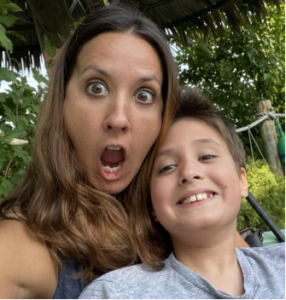
Once again, we are getting ready to charter new seas as we enter a post-pandemic school year. Post-pandemic has ominous tones to it and hopefully, this year will exceed far beyond this namesake. Now is the time to consider your own well-being as well as that of your students. We may have all experienced some type of trauma over the last year, whether this is the stress of unpredictability, the fear of the unknown, or more. Now, more than ever, we must take into account the whole self as educators and the whole child, as ESSA reiterates, making sure to nourish our students not only academically but socially and emotionally as well.
The arts have always been a staple within the realm of Social and Emotional Learning. One of the great benefits we have as educators in this field is this opportunity to reach our whole student, academically and emotionally. We are masters of creating community and building confidence individually and socially. Students more than ever will need to feel safe, comfortable, and connected to their curriculum. Coming off of the craziest year and a half of education, we have the ability to become change agents within our schools. It is such a privilege to be recognized as an authority on the well-being of our school communities. This includes students, staff, and the families of both. This blog post will provide you with key resources to approach school administrators and offer your support.
There are many resources available that connect the arts with social and emotional learning. Here are a few noteworthy ones. Click on the images to access each resource. The first is from the PA Arts Education Leadership Coalition and the PA Department of Education. Both organizations collaborated on this extensive SEL PowerPoint presentation that can be utilized in its entirety or broken into smaller chunks. The resource is full of links and suggestions for application. SEL in the Arts Classroom
This resource can be used
- As a resource bank: Select appropriate resources to supplement SEL programs currently being implemented in your school or district.
- As a framework for professional development: Create professional development for visual art teachers that informs SEL learning through art-specific, standards-based instruction.
- As a self-paced training: • Learn the language of SEL through the lens of art education.
The next resource was recently released by the Center for Arts Education and Social-Emotional Learning, ArtsEdSEL. This organization created a framework of SEL competencies with the National Core Arts Standards and identified intersections of the two using common sense language. The framework is very user-friendly. Here is their description:
“Arts Education & Social Emotional Learning Framework is designed to illuminate the intersection between arts education and social-emotional learning to allow for the intentional application of appropriate teaching and learning strategies, with the overarching goal of enhancing art education.” This is a very valuable resource and provides a structure to assist with other crosswalk applications. ArtsEdSEL
A final resource is from the PA Department of Education. This resource is not specifically targeted for Arts Education. However, the framework does advocate for our programs in the terms of providing a rich educational experience aimed at creating career readiness. The resource is the PA Career Readiness Skills Continuum.
This resource focuses on three benchmarks: Self-Awareness and Self-Management, Establishing and Maintaining Relationships, and Social Problem-Solving Skills. Each of these benchmarks can be woven into the Pa Arts and Humanities curriculum. We can identify these links while advocating for our programs.
When reviewing these resources, consider the following:
- What do I need to recognize about myself as an educator that might impact my instruction?
- What do I need to recognize about my classroom structure or environment that may impact my students’ performance?
- What are my students needing at this moment in time that could impact their learning? (This will change, so re-assessing is key.)
Answering these questions is a step towards meeting the social and emotional needs of your practice and that of your students. Identifying these needs will benefit your well-being and that of your students. I wish you all the best start to an incredible school year.
For more information regarding Advocacy, visit http://paeablog.org/advocacy/.
Sketchbook Construction for Elementary Classrooms
CJ Matz (he/him) teaches elementary and middle school art in the Whitehall-Coplay School District (Region 10). He is a contracted writer for Davis Publications and PAEA’s Youth Art Month Chairperson.
I am a huge advocate for using sketchbooks in the art classroom! Aside from a canvas on which to work, sketchbooks provide a place for students to brainstorm, map, document, plan, draw, reflect, and communicate. In my classroom, they are an essential tool that students utilize daily in both my elementary and middle school classrooms.
In fact, the first project we complete each year is, you guessed it: a sketchbook.
As many of us deal with ever-shrinking budgets, purchasing sketchbooks for all of our students is often an impossibility. Creating a sketchbook is a great way to save money, but also a fantastic way to teach about book-making processes and engage students in constructing a resource they will need and use throughout the school year.
I have found, over the years, that many teachers view bookmaking as a very complex process unable to be incorporated into an elementary curriculum. As with any media, it most certainly can be complex, but it does not have to be. It can easily be explored with younger students. The sketchbooks I am introducing below are simple, quick ways to teach students about bookmaking while incorporating the practice into their skill set.
Additionally, as we face continued uncertainty with how and where students will be learning in the fall, I opted to include designs that can be created using minimal materials. Best of all, they are glue-free, so there is no need to wait for the books to dry between classes!
A few notes before we begin:
- For sketchbooks, I use 9×12” white drawing paper, but you can adjust the size and type to suit your needs.
- For books that are bound together with yarn, I use about 27” of yarn per student. It is often way more than they will need, but I recycle the leftovers in my yarn bin for other projects. You can play around with a length that works best for you.
- I usually have my students design covers for their sketchbooks. I believe that it is their book, so they should get to choose how it looks. For this blog post, I did not include covers. You may opt to add one or just have students decorate the outermost sheet!
Book 1: No-Sew Pamphlet Sketchbook
Supplies:
- A few sheets of paper
- Scissors
- Yarn
Steps:
- Pile the papers together and fold them in half. I work with elementary students, so we still call it the “hamburger” way.
- Open the book to the very center. You will see the crease down the middle of the page.
- Tightly wrap the yarn around the book until you run out. I usually have my students hold (or tape) the end of the yarn with one hand as they wrap with the other.
- The yarn should be tightly wrapped around the book, but not tight enough to bend the paper.
- Tie off the beginning and end of the yarn.
- Cut off the excess yarn.
- Voila! You have a book!
I have found this to be one of the simplest and most effective sketchbooks. It typically only takes them a few minutes to make, which is great when students are absent or have recently moved into the district. Within minutes these students are caught up, and you can move on with your lesson. This design also allows for easy removal or addition of new pages.
Book 2: No-Sew Puzzle Book
I refer to this as a puzzle book because of the way the cover and pages fit together.
Supplies:
- A few sheets of paper (I used a piece of construction paper to better illustrate the steps)
- Scissors
- Marker/Pencil
Steps:
- Pile the papers together and fold them in half the “hamburger” way.
- Measure 1-1.5” from the top and the bottom along the folded edge and draw a small 1” line at each of those measurements.
- Cut along those lines to form little slits.
- Separate the top page (cover) from the rest of the pages.
- Cut a thin line between the two slits. When you open the top page, it will look like you’ve cut out a small rectangle.
(Insert Photo 9) (Insert Photo 10) (Insert Photo 11)
- Set the top page aside.
- Open the remaining pages so the fold in the paper is facing you.
- On the top and bottom of that fold, cut the paper until you reach each slit.
- Roll up the paper like a newspaper.
- Slide the roll through the cutout you made in the top page.
- Carefully unroll the pages.
- Voila! You have a sketchbook!
Book 3: Sewn Pamphlet Sketchbook
Supplies:
- A few sheets of paper
- Scissors
- Yarn
- Marker/Pencil (optional)
Steps:
- Pile the papers together and fold them in half the “hamburger” way.
- Along the folded edge, make a mark in the center and about an inch from the top and bottom.
- Cut little slits at each of those marks. (Note: If your students are more advanced, you can open the book and make the marks along the centerfold. Students can then use a blunt needle, awl, or pencil to punch holes through the paper.)
- Thread a large needle with the yarn. (Note: I am using a plastic tapestry needle, but any needle that the yarn fits through will work perfectly.)
- Open the book to the center and push the needle through the middle hole. The needle should go from the inside of the book to the outside. Remember to leave a little yarn tail inside the book. Sometimes I have my students tape the tail down so it doesn’t slide out if they pull too hard.
- Pull the yarn taught.
- Turn the book over. Next, push the needle through the bottom hole to the inside of the book.
- Pull the yarn taught.
- Flip the book over so the inside is facing you. Push the needle back through the middle hole to the outside of the book.
- Pull the yarn taught.
- Flip the book over so the outside is facing you. Push the needle through the top hole so it goes inside the book.
- Pull the yarn taught.
- Insert the needle under the yarn between the bottom and middle holes.
- Pull the yarn taught.
- Tie off the yarn with a double knot.
- Cut off the excess yarn.
- Voila! You have a sketchbook!
Optional Extension for the Sewn Pamphlet Sketchbook:
Overall, I’ve gotten away from utilizing worksheets in my classroom and I opt mostly for online resources. However, every now and then there are miscellaneous papers I like my students to have readily available. The best solution for this? Pockets!
Optional Extension for the Sewn Pamphlet Sketchbook:
Overall, I’ve gotten away from utilizing worksheets in my classroom and I opt mostly for online resources. However, now and then I do use worksheets I need my students to keep track of. The best solution for this? Pockets!
To create pockets with the Sewn Pamphlet Sketchbook, you will need:
- A cereal box (To gather enough boxes for my students, I simply asked my colleagues to donate any used cereal boxes. Be sure to request that they are collapsed! It will save you the hassle and make them easier to store until you need them.)
- Tape/Glue (I prefer masking tape for this. I find it holds up better than glue and eliminates the need for drying time!)
- Scissors
Steps:
- Cut off all the tabs on the top and bottom of the box.
- Collapse the box.
- Locate the right-side panel of the box and cut along the crease separating the side panel from the back panel.
- Flip the box over. Fold side A. This will be easy because there is already a crease there. Fold side B to match side A. You have now created two flaps.
- Tape the top and bottom of each flap. This will create pockets.
- Close the box.
- Line up the pages of the sketchbook and mark where you are going to make the holes. The box will be sticking out on the side, top, and bottom. You can cut it down if you want, but I like the way it looks and so does my students.
- Cut little slits where you are going to make holes.
- Insert the papers into the box making sure the slits match up.
- Follow the instructions from the Sewn Pamphlet Sketchbook to sew the book together.
- Voila! You now have a Sewn Pamphlet Sketchbook with a cover that has pockets!

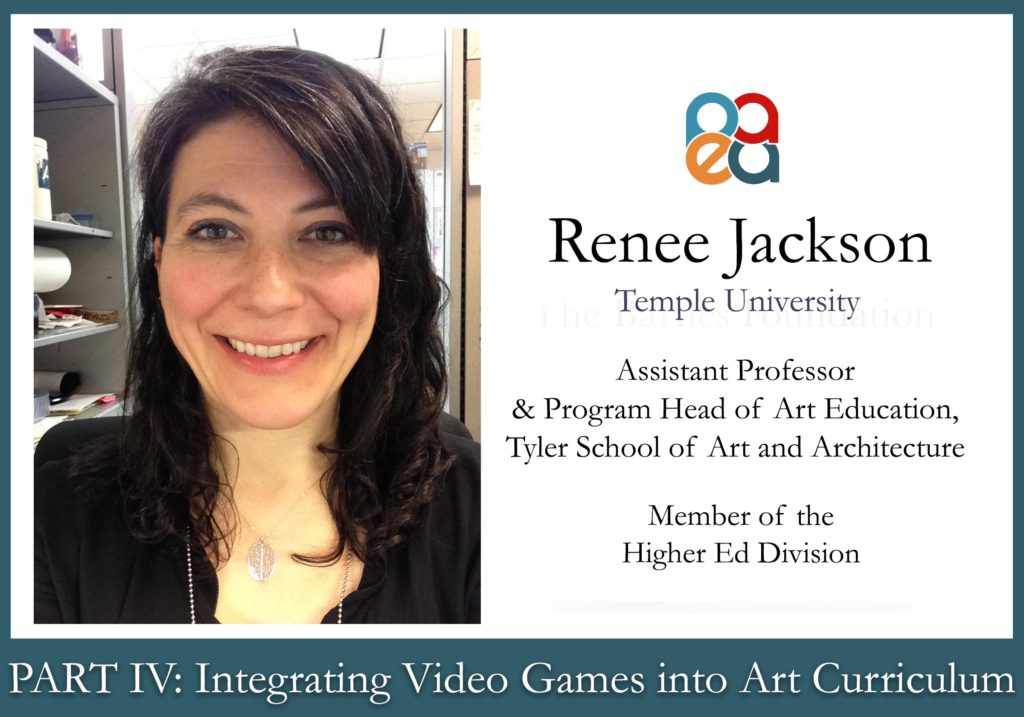
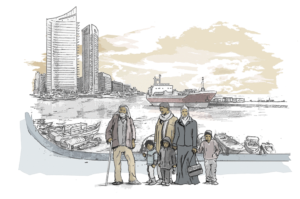






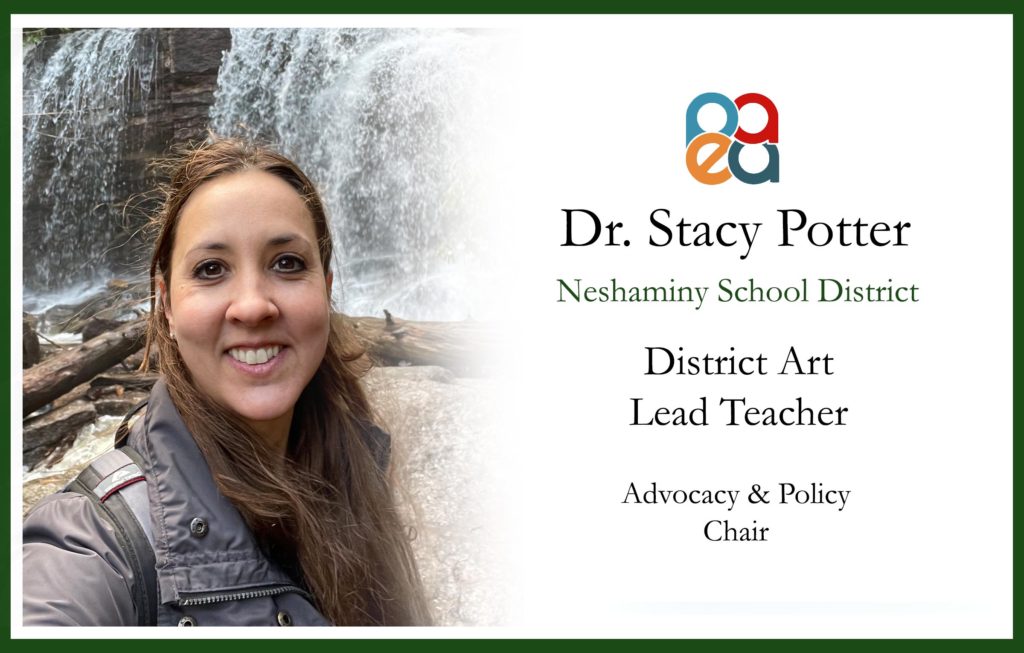
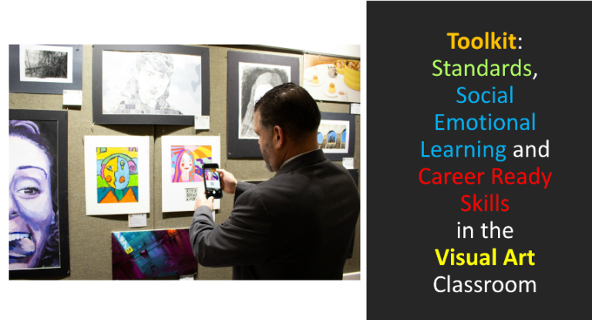
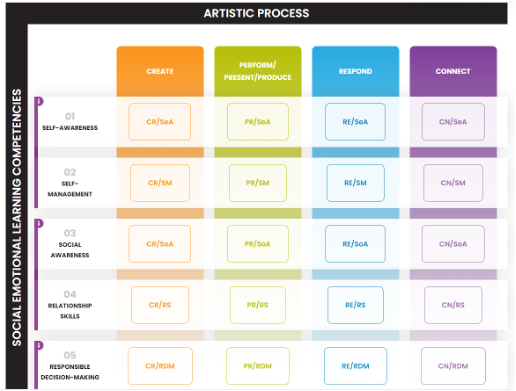
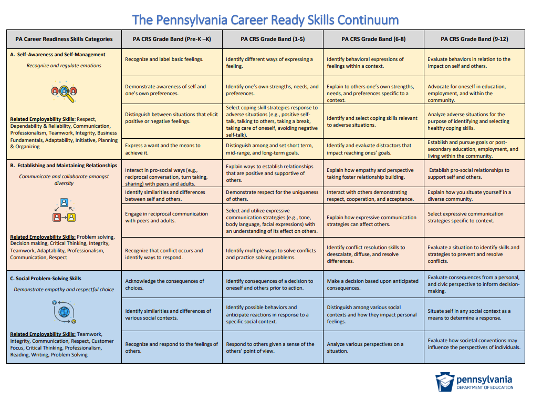

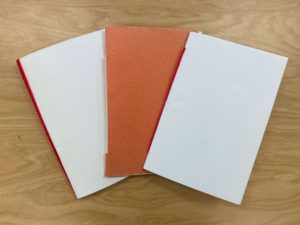

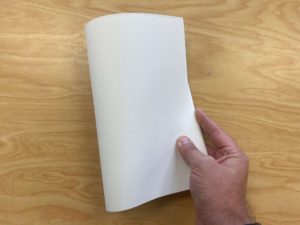
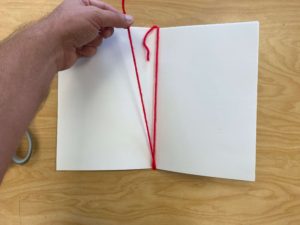
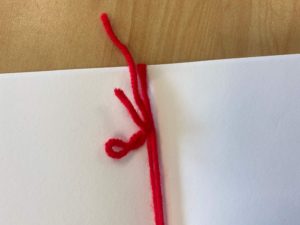
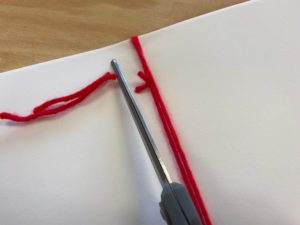
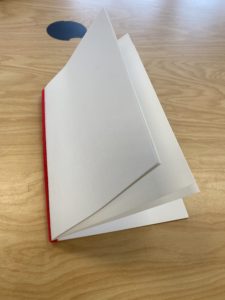
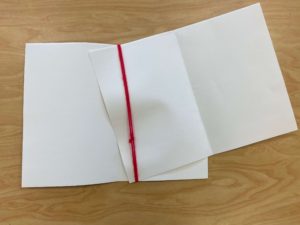
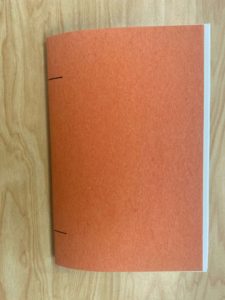
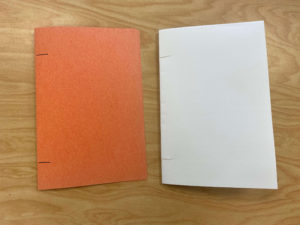


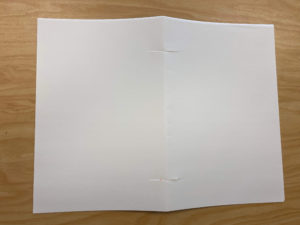

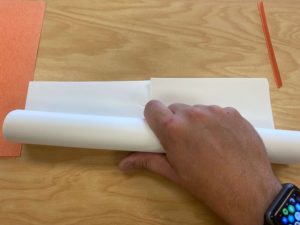
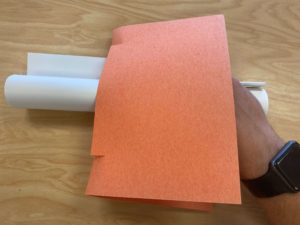
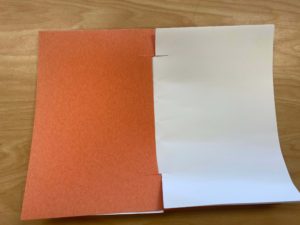
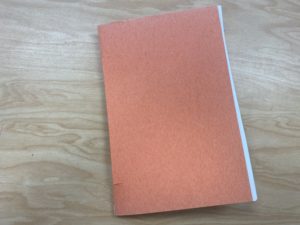
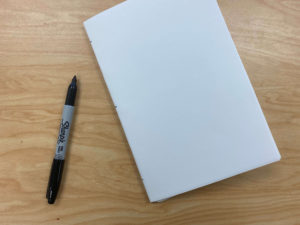
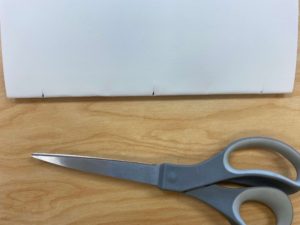
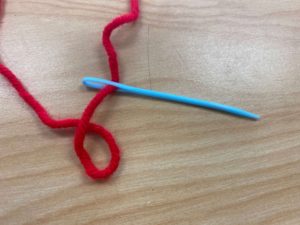
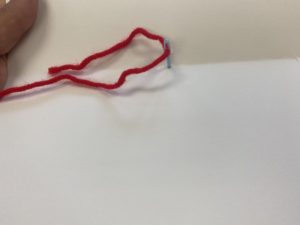
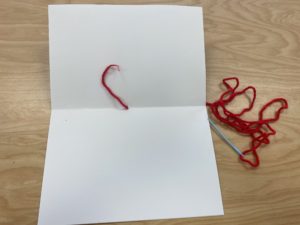
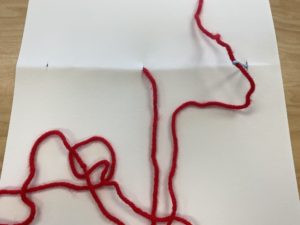
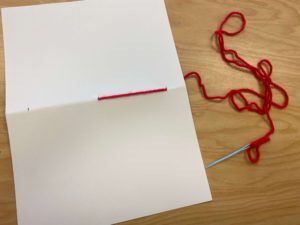
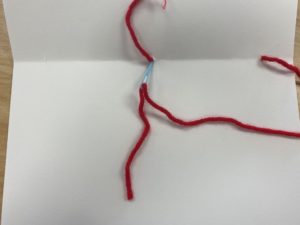
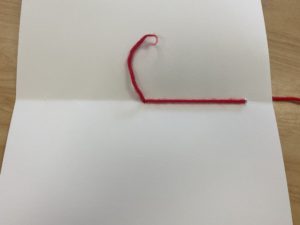
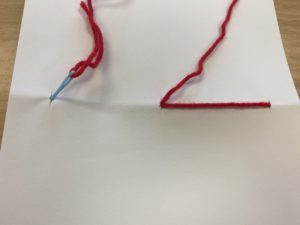
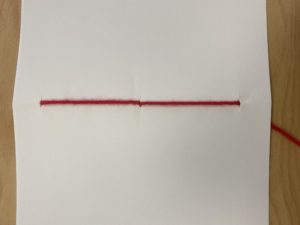
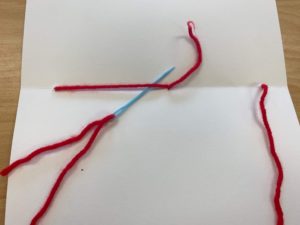
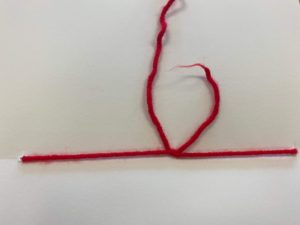
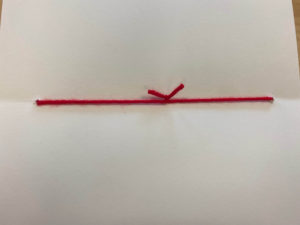
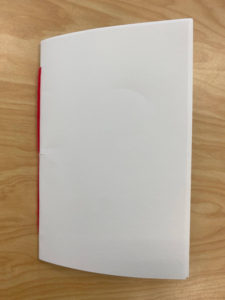
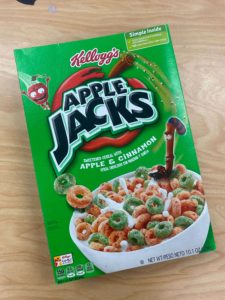


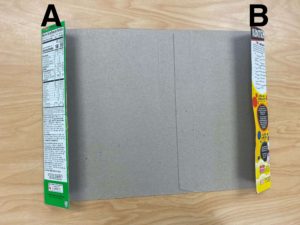
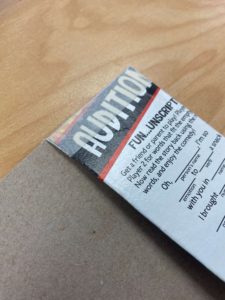
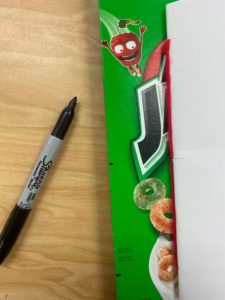
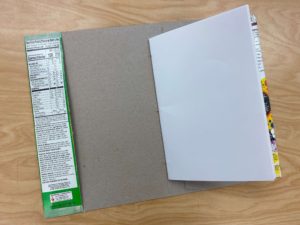

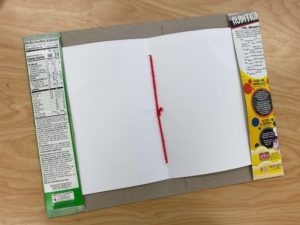

 D5 Creation
D5 Creation